Table of content
Chestnuts, with their sweet, nutty flavor and versatile culinary applications, are a beloved ingredient in kitchens worldwide. Whether roasted over an open fire, simmered in soups, or blended into decadent desserts, these nutrient-rich nuts add a unique depth to dishes. However, the notorious challenge of peeling chestnuts often deters even the most enthusiastic home cooks. The struggle to remove the stubborn outer shell and inner skin without shredding the tender flesh inside is a rite of passage for chestnut enthusiasts. Fortunately, mastering the art of cooking chestnuts to perfection—ensuring they are both tender and easy to peel—is achievable with the right techniques. This comprehensive guide explores the science behind chestnut anatomy, the best cooking methods, and expert tips to transform this daunting task into a hassle-free process.
Understanding Chestnut Anatomy: Why Peeling Is Challenging
Before diving into cooking methods, it’s essential to grasp why chestnuts are notoriously difficult to peel. Unlike almonds or walnuts, which have smooth, thin shells, chestnuts are encased in a thick, leathery outer hull (called the pericarp) and an inner skin (pellicle) that adheres tightly to the flesh. The pericarp contains tannins, which can stain hands and tools, while the pellicle’s clingy nature makes it prone to tearing the flesh if not loosened properly.
During cooking, heat causes the pericarp to dry out and shrink, creating air pockets between the shell and flesh. However, if not cooked correctly, the pellicle remains stubbornly attached. The key to effortless peeling lies in balancing heat and moisture to soften both layers without drying out the flesh.
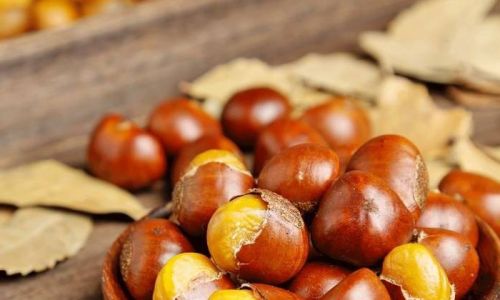
Boiling: The Foolproof Method for Soft, Pliable Shells
Boiling is often hailed as the most reliable method for achieving chestnuts that slip out of their shells with minimal effort. This technique uses moisture to penetrate the shell, softening the pellicle and creating steam pressure that loosens the bond between shell and flesh.
Step-by-Step Boiling Guide
-
Preparation:
- Score the Shells: Using a sharp paring knife or chestnut cutter, score an “X” or straight line on the flat side of each chestnut. This step is non-negotiable; it allows steam to escape and prevents explosions during cooking.
- Soak (Optional): Some chefs swear by soaking scored chestnuts in warm water for 15–30 minutes. While not mandatory, this step can hydrate the shells, speeding up the cooking process.
-
Cooking:
- Place chestnuts in a pot of boiling water. Use enough water to cover them by 1–2 inches.
- Boil for 15–20 minutes, adjusting for size (larger chestnuts may need 25 minutes).
- Avoid overcrowding the pot; cook in batches if necessary.
-
Peeling:
- Drain the chestnuts and let them cool slightly until safe to handle.
- Peel while still warm—the residual heat loosens the pellicle further.
- Start by cracking the scored shell with your thumb and forefinger, then gently peel away both the outer shell and inner skin.
Why Boiling Works
The high moisture content of boiling water penetrates the shell, softening the pellicle and creating steam that separates it from the flesh. This method is particularly effective for recipes requiring whole or halved chestnuts, such as stuffing or purées.
Roasting: Enhancing Flavor with Open-Fire Techniques
Roasting chestnuts in an oven or over an open flame imparts a smoky, caramelized flavor that boiling cannot replicate. However, this method requires careful execution to avoid dried-out flesh or burnt shells.
Oven Roasting
-
Preparation:
- Score chestnuts as described earlier.
- Preheat the oven to 425°F (220°C).
-
Cooking:
- Arrange chestnuts in a single layer on a baking sheet.
- Roast for 15–20 minutes, shaking the pan occasionally to ensure even cooking.
-
Peeling:
- Wrap hot chestnuts in a clean kitchen towel and let them steam for 5 minutes.
- Peel immediately, using the towel to protect your hands from heat.
Open-Fire Roasting (For Adventurous Cooks)
-
Preparation:
- Use a chestnut roasting pan or a long-handled wire basket.
- Score chestnuts deeply to prevent explosions.
-
Cooking:
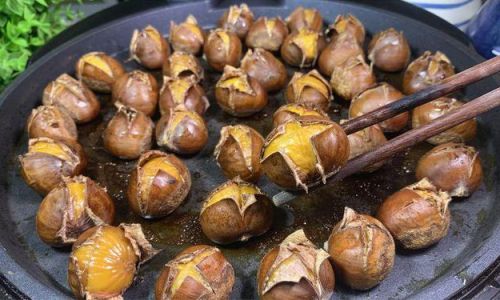
Roast over medium-high heat for 10–15 minutes, turning frequently.
-
Peeling:
Transfer to a towel-lined bowl and steam for 5 minutes before peeling.
Pro Tips for Roasting
- Timing is Key: Overcooking dries out the flesh, making peeling harder.
- Steam After Roasting: Wrapping in a towel traps moisture, softening the pellicle.
Microwaving: A Quick Hack for Small Batches
While not ideal for large quantities, microwaving offers a speedy solution for peeling a handful of chestnuts.
-
Preparation:
- Score chestnuts and place them in a microwave-safe dish.
- Add 2–3 tablespoons of water and cover with a lid or plastic wrap.
-
Cooking:
Microwave on high for 1–2 minutes per ounce of chestnuts.
-
Peeling:
Let cool slightly, then peel while warm.
Caveat: Microwaving can unevenly cook chestnuts, leading to some dried-out pieces. Combine with boiling for best results.
Pressure Cooking: The Modern Chef’s Secret Weapon
Pressure cookers slash cooking time while retaining moisture, making them ideal for chestnuts.
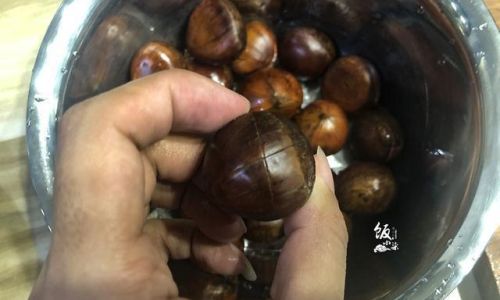
-
Preparation:
Score chestnuts and place them in the pressure cooker with 1 cup of water.
-
Cooking:
Cook at high pressure for 3–4 minutes, then quick-release the pressure.
-
Peeling:
Drain and peel immediately while warm.
Comparing Methods: Which Is Right for You?
| Method | Peeling Ease | Flavor Profile | Time Required | Best For |
|---|---|---|---|---|
| Boiling | Neutral, tender | 20–25 mins | Purées, soups | |
| Roasting | Smoky, caramelized | 15–20 mins | Snacking, salads | |
| Microwaving | Mild | 5–10 mins | Small batches | |
| Pressure | Tender, moist | 10–15 mins | Quick meals |
Troubleshooting Common Peeling Problems
-
Shells Sticking to Flesh:
- Cause: Undercooking or insufficient scoring.
- Fix: Boil for 2–3 minutes longer or re-roast briefly.
-
Flesh Crumbling:
- Cause: Overcooking.
- Fix: Reduce cooking time by 2–5 minutes.
-
Inner Skin Remaining:
- Cause: Lack of steam during cooking.
- Fix: Ensure proper scoring and consider wrapping in a towel post-cooking.
Storage and Peeling Hacks
- Freezing Cooked Chestnuts: Peel while warm, then freeze in airtight bags for up to 6 months.
- Rehydrating Dried Chestnuts: Soak overnight in water before cooking.
- Use a Serrated Knife: For tough shells, a bread knife can help score without slipping.
Culinary Inspiration: What to Do With Peeled Chestnuts
- Chestnut Soup: Purée with vegetables and cream for a velvety winter dish.
- Stuffing: Mix with sausage, apples, and herbs for holiday turkey.
- Desserts: Fold into brownies, mousse, or mont blanc pastries.
- Vegan Recipes: Roast and toss into salads with pomegranate and kale.
Conclusion: Mastering the Art of Chestnut Preparation
Peeling chestnuts need not be a frustrating ordeal. By understanding the interplay of heat, moisture, and scoring techniques, even novice cooks can achieve perfectly peeled chestnuts every time. Whether you prefer the simplicity of boiling, the smokiness of roasting, or the speed of pressure cooking, the key lies in patience and practice. Armed with these methods, you’ll unlock the culinary potential of chestnuts, transforming them from a seasonal novelty into a pantry staple. So fire up the stove, grab your knife, and embrace the joy of effortlessly peeled chestnuts—your winter dishes will thank you.
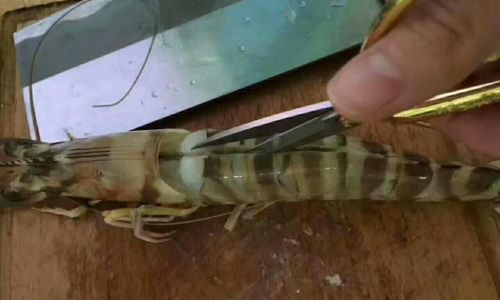


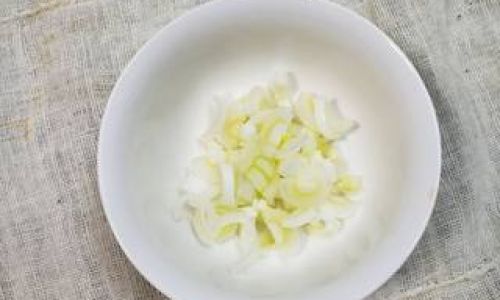
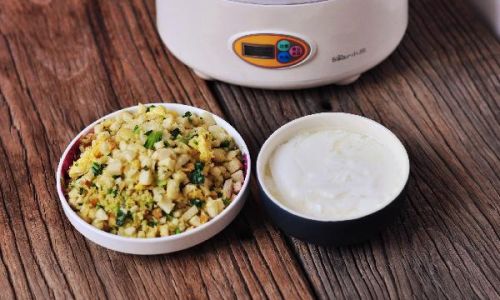
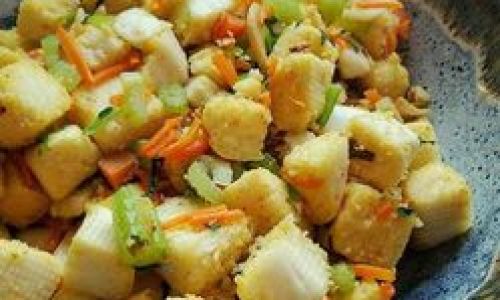
0 comments